Epic Guide to Big Bend National Park in Texas, including things to do, history, lodging, camping, and so much more.
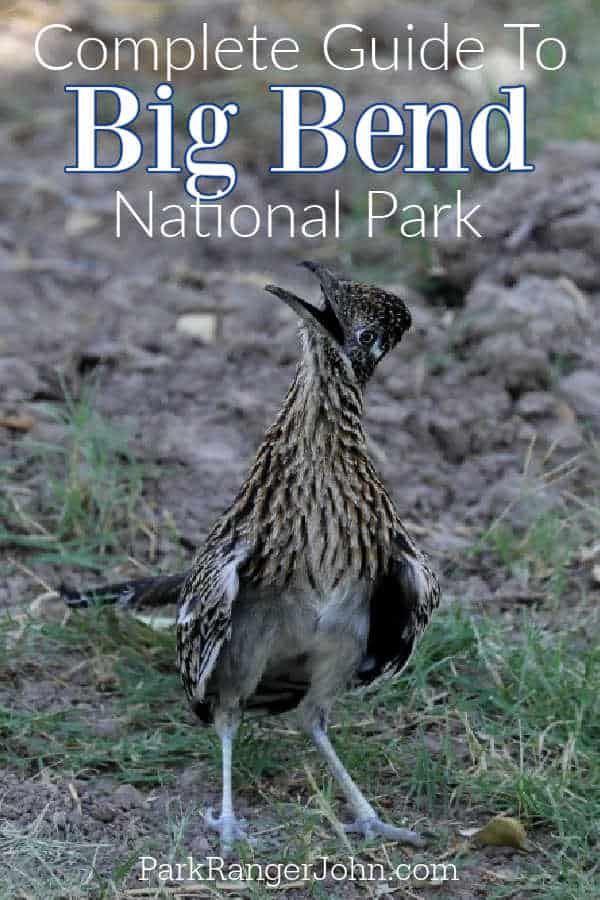
Big Bend National Park
The truly stunning sights you'll witness are one of the most compelling reasons to visit Big Bend National Park.
The Rio Grande, steep mountains and cliffs, rugged landscape, and panoramas that stretch as far as the eye can reach are all the features of this magnificent place.
Big Bend National Park, often called “Texas' Gift to the Nation”, is known for its natural aspects and recreational activities, as well as its cultural past. For thousands of years, native peoples have lived in and traveled through this area.
Big Bend has gigantic gorges, immense desert stretches, wooded mountains, and an ever-changing river, with elevations ranging from about 1,800 feet in the Rio Grande area to over 8,000 feet in the Chisos Mountains.
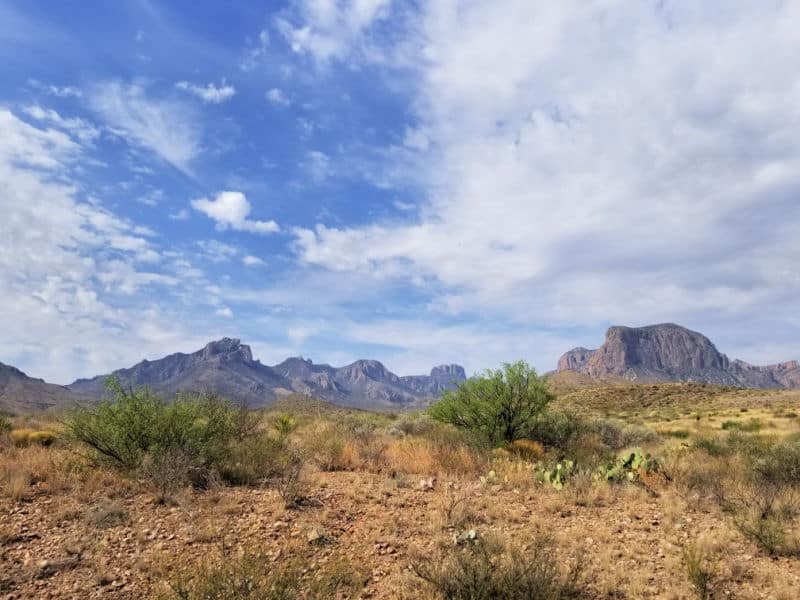
About Big Bend National Park
Located in West Texas, Big Bend National Park borders Mexico for about 118 miles.
The park’s name comes from a huge bend in the Rio Grande River and has national significance as the United States' biggest protected area of the Chihuahuan Desert.
Over 1,200 species of plants, 450 birds, 56 reptiles, and 75 animal species are protected in the park.
Hiking, scenic drives, stargazing, and ranger programs are some of the most popular activities in the park.
The known history of the park stretches for 10,000 years, including periods of indigenous tribes that lived here, first European settlers, ranchers, and miners.
The Chisos Mountains are completely locked inside the boundaries of the national park, making it the only mountain range with these characteristics in the United States.
Fossils like dinosaur bones and volcanic dykes are among the park's geological features.
The park presents unique challenges in managing and executing park laws, regulations, and policies since the Rio Grande acts as an international border.
The park's boundaries are located in the middle of the river's deepest channel, and the rest of the waterway, as well as the land to the south, is Mexican territory.
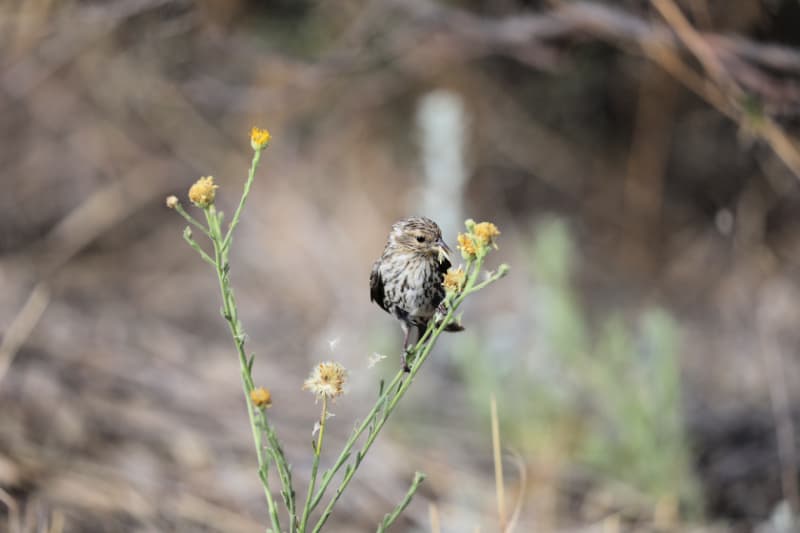
Is Big Bend National Park worth visiting?
If you are an outdoor enthusiast then you should definitely give a shot to Big Bend National Park.
It is located in a very remote area, and the weather can go from extremely hot to heavy rain in a day. Be prepared for everything you may encounter in the park, from the weather to animals, access to cities, etc.
Big Bend offers tourists breathtaking scenery, hundreds of miles of hiking trails and roads to explore, float rides on the huge Rio Grande River, and some of the darkest night skies in the lower 48.
For stargazing, there are not many places like this dessert. The West Contrabando Trailhead, Big Hill, River Road, and the Hoodoos are great spots and provide magnificent views and are accessible by any vehicle.
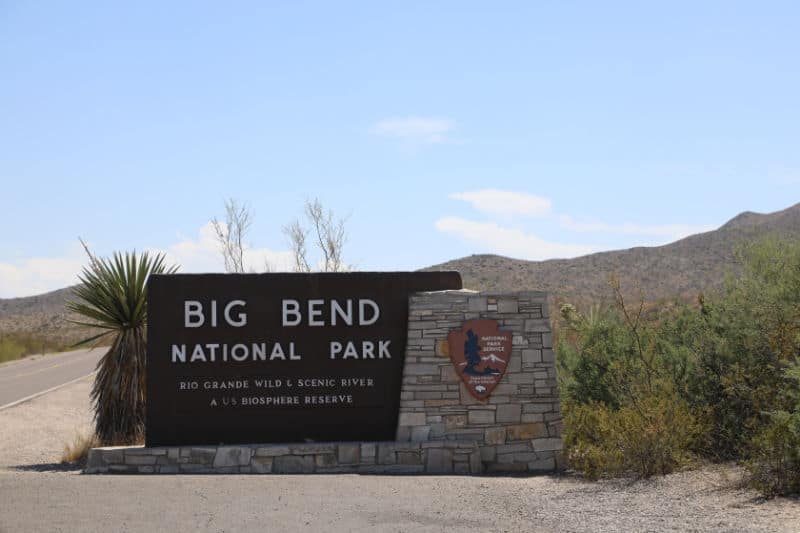
History of Big Bend National Park
Thousands of years ago, when the first Native Americans arrived in the Big Bend, there were no tracks. Many distinct tribes ebbed and flowed through the region, subsisting on the area's native flora and fauna. Big Bend National Park's oldest archeological site dates back 8,800 years.
When the first Europeans came in the 1500s, their hunter-gatherer lifestyle was disrupted. The Mescalero Apache and Comanche tribes arrived in the Big Bend not long after.
Despite the fact that Spain claimed the Big Bend for 300 years, it was never settled. Neither did Mexico, which claimed these areas for another 50 years following independence from Spain.
El Despoblado was the name given to the location by both the Spanish and the Mexicans (the uninhabited land). It belonged to them since the Mescalero and the Comanche held the country until long after they had given up their claim to it.
Military installations were created after the Civil War, and the Apache and Comanche were driven to reserves in other areas by mounted cavalry, principally Buffalo Soldiers.
Ranches sprung up in the 1880s and lasted until the mid-twentieth century. Much of the area that was once privately owned is now part of Big Bend Ranch State Park or Big Bend National Park.
Silver was discovered in adjacent northern Mexico in the 1890s, and cinnabar was discovered throughout the Big Bend not long after. Around the beginning of the century, there was a mining boom that lasted roughly 20 years.
The Mexican Revolution erupted in 1910, and Big Bend became a war zone for the next ten years. On both banks of the Rio Grande, there were raids, pitched battles, and killings.
The United States and Mexico were on the verge of war due to deteriorating ties between the two countries. Pancho Villa and General Pershing were key figures in that period of the region's history.
Big Bend National Park was established in 1944, after a ten-year campaign by local residents to build a national park. It was a distant area with no paved roads, little recognized by the general public, and South Brewster County near the park was sparsely populated at the time.
The contemporary era of tourism began in the 1960s. By that time, the region had established itself as a popular destination for adventure tourists, rafters, hikers, natural history students, and birders.
River businesses had formed, the first championship chili cookoff had taken place, and Big Bend had taken on a new character.
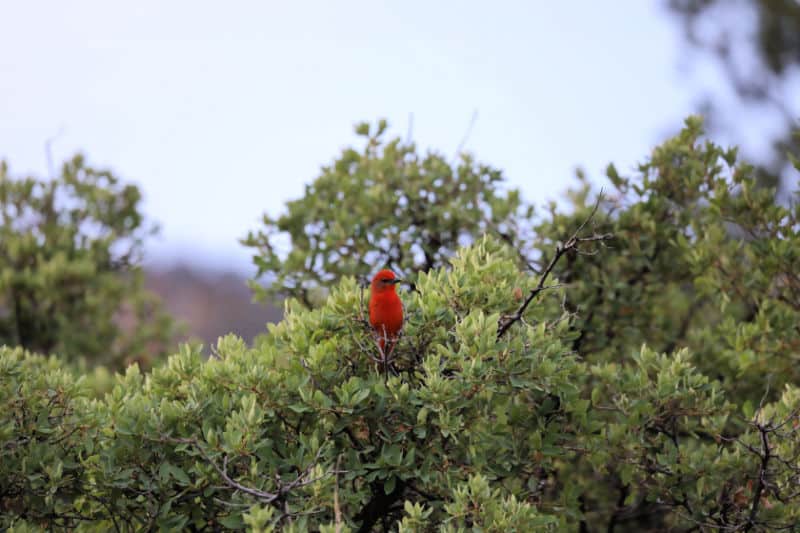
Things to know before your visit to Big Bend National Park
Big Bend National Park Entrance Fee
Park entrance fees are separate from camping and lodging fees.
Park Entrance Pass - $30.00 Per private vehicle (valid for 1-7 days from the date of purchase)
Park Entrance Pass - Motorcycle - $25.00 Per motorcycle (valid for 1-7 days from the date of purchase)
Per-Person Entrance Pass - $15.00 Visitors 16 years or older who enter on foot, bicycle, or as part of an organized group not involved in a commercial tour.
Annual Park Entrance Pass - $55.00, Admits pass holder and all passengers in a non-commercial vehicle. Valid for one year from the month of purchase.
$30.00 for Non-Commercial Group (16+ persons)
$25.00 for Commercial Sedan with 1-6 seats and non-commercial groups (16+ persons)
$100.00 for Commercial Mini-Bus with 16-25 seats
$200.00 for Commercial Motor Coach with 26+ seats
Learn more about National Park Passes for parks that have an entrance fee.
$80.00 - For the America the Beautiful/National Park Pass. The pass covers entrance fees to all US National Park Sites and over 2,000 Federal Recreation Fee Sites for an entire year and covers everyone in the car for per-vehicle sites and up to 4 adults for per-person sites.

Buy your pass at this link, and REI will donate 10% of pass proceeds to the National Forest Foundation, National Park Foundation, and the U.S. Endowment for Forestry & Communities.
National Park Free Entrance Days -Mark your calendars with the five free entrance days the National Park Service offers annually.
Time Zone
CST - Central Standard Time
Pets
You can bring your dog/pet with you to Big Bend NP. One thing to remember is the park can get quite hot! You do not want to leave your pet in your car while you are out exploring.
Pets are not allowed on trails, off roads, or on the river. Your pet can only go where your car can go.
Pets need to be on a leash no longer than six feet in length
There is no kennel service in the park.
For more information visit the pets page.
Cell Service
Although there is some poor cell phone coverage in Big Bend National Park and the surrounding region, you should not rely on it since mobile reception in the park and adjacent areas can be unstable.
In general, cell phone coverage is supposed to be reasonably stable in Chisos Basin Campground and Panther Junction.
Park Hours
The Big Bend National Park is always open. You are free to come and go at any time of day or night. The park's entrances are open all year, 24 hours a day.
Wi-Fi
Wi-Fi is available at the Panther Junction Visitor Center, the Chisos Mountain Lodge, and the Rio Grande Village Store.
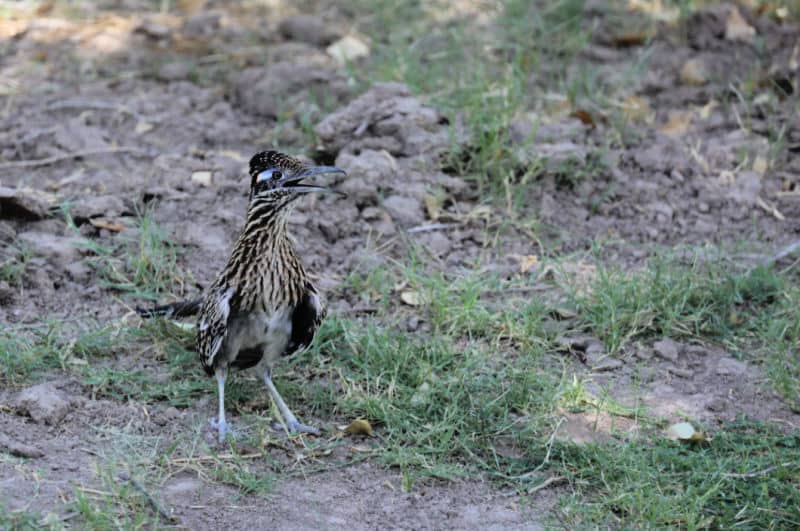
Parking
You can find easy parking at the Panther Junction Visitor Center, the Chisos Basin Visitor Center, the Persimmon Gap Visitor Center, the Rio Grande Village Visitor Center, and the Castolon Visitor Center.
Food/Restaurants
The Mountain View Restaurant, which is located in the Chisos Mountains Lodge, has full-service dining.
The restaurant serves breakfast (7 AM - 10 AM), lunch (11 AM - 4 PM), and dinner (5 PM - 9 PM) every day and a spectacular view of the surrounding mountains.
You can also get "Hikers Lunches" for picnicking in the park. Buy food and drinks at Panther Junction, Castolon, the Chisos Basin, and Rio Grande Village.
There are also several eateries and grocery stores outside the park in small towns like Terlingua and Study Butte.
Gas
You can find gas in the park at these locations:
- Panther Junction Service Station - located west of the Panther Junction Visitor Center, has gas, diesel, and groceries.
- Rio Grande Village Service Station - located at the RGV store, has gas, propane, and groceries.
Outside the park look for gas here:
- Study Butte - Big Bend Resorts and Adventures has gas and diesel.
- Lajitas - Lajitas General Store offers gas.
- Terlingua - Terlingua Auto Service offers auto repair and towing.
- FM 2627 - Stillwell Store has gas.
National Park Passport Stamps
National Park Passport stamps can be found in the visitor center.
We like to use these circle stickers for park stamps so we don't have to bring our passport book with us on every trip.
The National Park Passport Book program is a great way to document all of the parks you have visitied.
You can get Passport Stickers and Annual Stamp Sets to help enhance your Passport Book.
Big Bend NP is part of the 1986 Passport Stamp Set.
Electric Vehicle Charging
Don't forget to pack
Insect repellent is always a great idea outdoors, especially around any body of water.
We use Permethrin Spray on our clothes before our park trips. Please read my article on preventing biting insects while enjoying the outdoors.
Sunscreen - I buy environmentally friendly sunscreen whenever possible because you inevitably pull it out at the beach.
Bring your water bottle and plenty of water with you. Plastic water bottles are not sold in the park.
Sunglasses - I always bring sunglasses with me. I personally love Goodr sunglasses because they are lightweight, durable, and have awesome National Park Designs from several National Parks like Joshua Tree, Yellowstone, Hawaii Volcanoes, Acadia, Denali, and more!
Click here to get your National Parks Edition of Goodr Sunglasses!
Binoculars/Spotting Scope - These will help spot birds and wildlife and make them easier to identify. We tend to see waterfowl in the distance, and they are always just a bit too far to identify them without binoculars.
There are no charging stations within the park.
There are Tesla chargers in Marfa and Fort Davis, TX
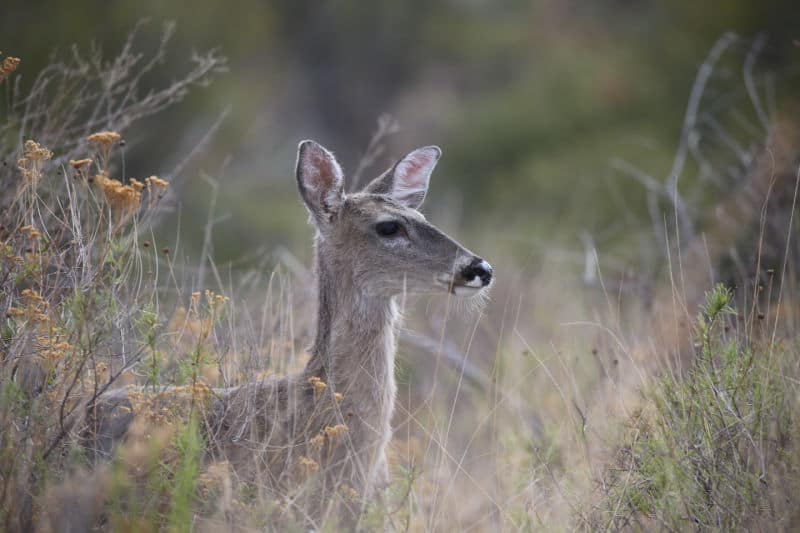
Details about Big Bend National Park
Size - 801,163 Acres
Big Bend NP is currently ranked at 14 out of 63 National Parks by Size.
Date Established
Big Bend National Park was established on June 12, 1944, after the state of Texas handed the property to the federal government in September 1943.
June 20, 1935 - National Park Authorized by President Franklin D. Roosevelt
June 12, 1944 - National Park Established by Congressional act signed by Franklin D. Roosevelt
October 26, 1976 - UNESCO International Biosphere Reserve
September 2001 - Recognized as a Globally Important Bird Area
Visitation
In 2021, Big Bend NP had 581,221 park visitors.
In 2020, Big Bend NP had 393,907 park visitors.
In 2019, Big Bend NP had 463,832 park visitors.
Learn more about the most visited National Parks and least visited National Parks in the US
National Park Address
1 Panther Junction
Big Bend National Park, TX 79834
Big Bend National Park Map
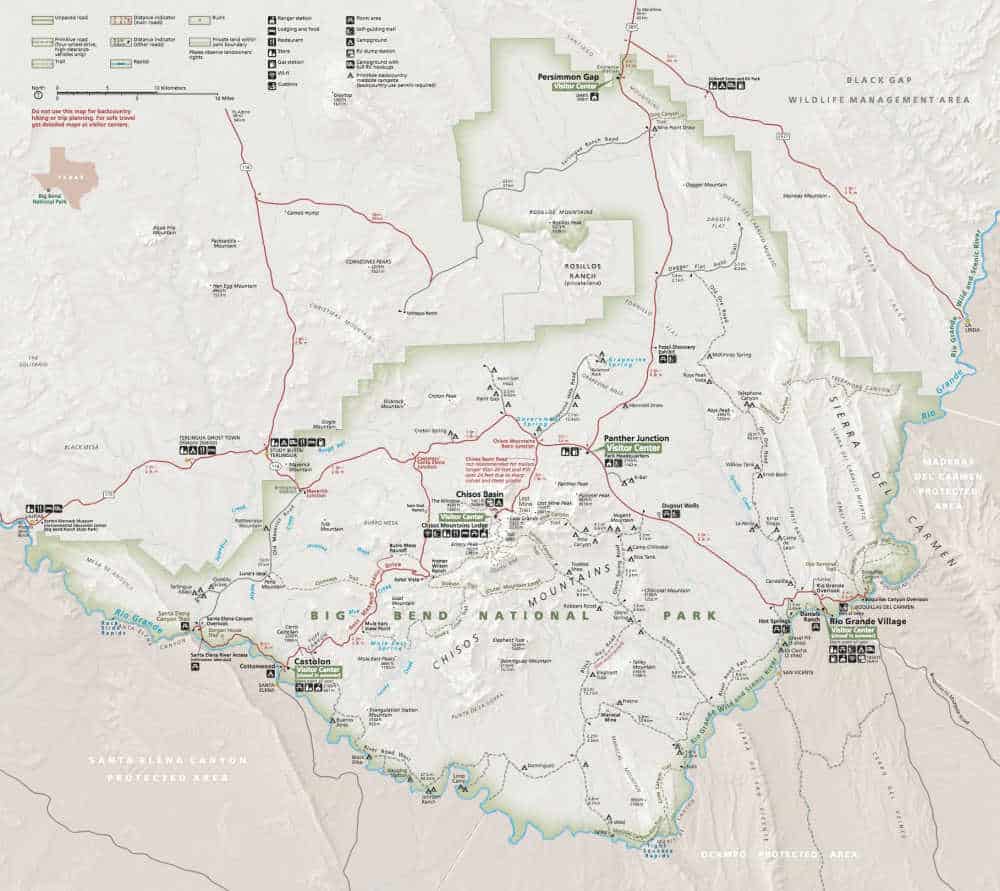
For a more detailed map, we like the National Geographic Trails Illustrated Maps on Amazon.
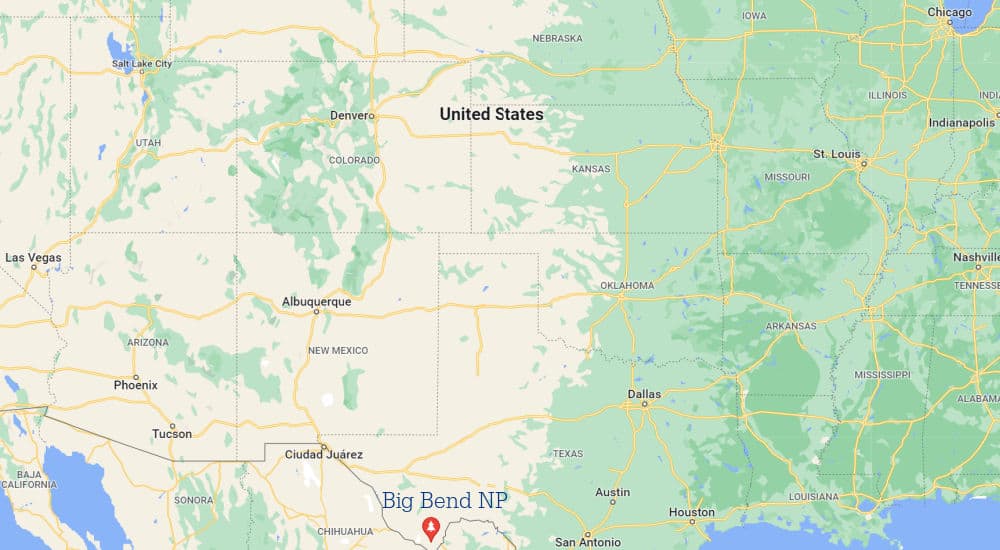
Where is Big Bend National Park?
Big Bend is located in southwestern Texas and takes a bit of driving to get to the park.
El Paso, Texas is 330 miles from the park.
The closest Amtrak stations are in Alpine, Texas 100 miles from the park.
Greyhound also offers service from Alpine, Texas.
Estimated distance from major cities nearby
Chihuahua, Mexico - 169 miles
Juarez, Mexico - 251 miles
Gomez Palacio, Mexico - 252 miles
Torreon, Mexico - 253 miles
Ciudad Juarez, Mexico - 256 miles
El Paso, TX - 257 miles
Nuevo Laredo, Mexico - 261 miles
Laredo, TX - 261 miles
San Antonio, TX - 295 miles
General Escobedo, Mexico - 298 miles
Nearby Towns
Terlingua, TX - 50.3 miles (1 hour 41 mins)
Lajitas, TX - 61.9 miles (1 hour 53 mins)
Marathon, TX 88 miles (2 hours 13 mins)
Alpine, TX - 119 mi (2 hours 41 mins)
Marathon, Texas
Small Grocery Store - French Company has supplies and some groceries.
V6 Café offers coffee/espresso, sandwiches and some desserts
There is also a BBQ restaurant in town. Make sure and get gas in town before heading to the park.
Alpine, Texas
Located 100 miles from Big Bend NP this is the largest town to the park. There are a large number of restaurants, gas and grocery options in town.
Fort Stockton, Texas
This is the biggest city you are going to run into on your way to Big Bend National Park. There is a Walmart Grocery that is great for getting supplies. We stayed at the Marriott in town and it was very nice.
Estimated Distance from nearby National Parks
White Sands National Park - 387 miles
Guadalupe Mountain National Park - 235 miles
Carlsbad Caverns National Park - 242 miles
Saguaro National Park - 601 miles
Great Sand Dunes National Park - 682 miles
Black Canyon of the Gunnison National Park - 831 miles
Grand Canyon National Park - 856 miles
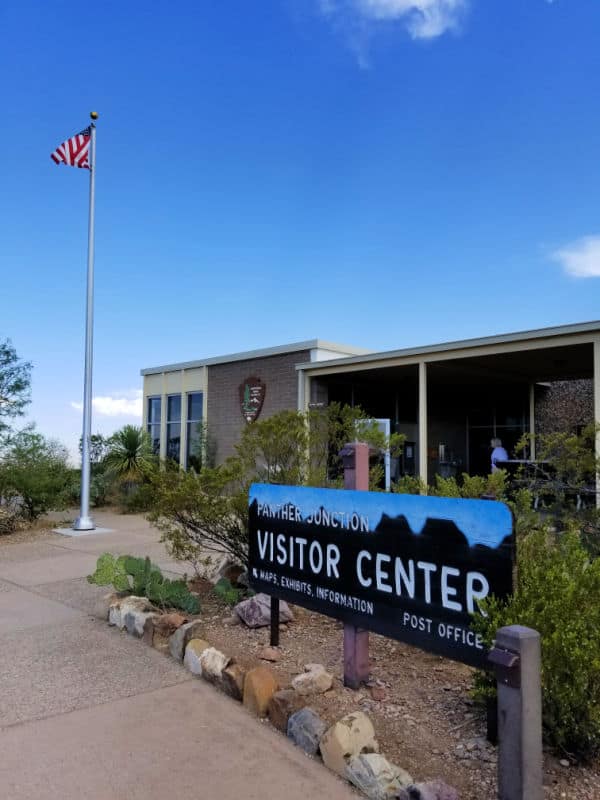
Where is the National Park Visitor Center?
Panther Junction Visitor Center - Located at the park headquarters offers a small bookstore, backcountry and river use permits, and a park movie that is shown every 30 minutes.
Chisos Basin Visitor Center - You can pay park entrance fees, pick up backcountry or river use permits and shop in the small bookstore.
Castolon Visitor Center - This visitor center is opened seasonally from November through April.
Persimmon Gap Visitor Center - This visitor center is opened seasonally from November through April.
Rio Grande Village Visitor Center - This visitor center is opened seasonally from November through April.
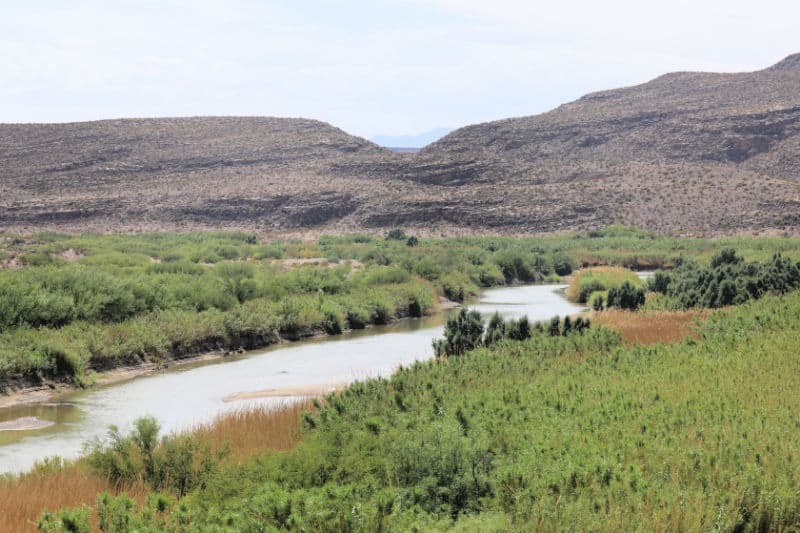
Getting to Big Bend National Park
Closest Airports
Midland International Airport (MAF)
The nearest airport to the park is Midland/Odessa, Texas located 235 miles away from the park.
International Airports
El Paso International Airport (ELP)
El Paso is the biggest international airport in the area, 287 miles southeast of the park.
Regional Airports
Cavern City Air Terminal (CNM)
Marfa Municipal Airport (MRF)
Alpine - Casparis Municipal Airport (ALE)
Driving Directions
Highways that lead to Big Bend National Park:
TX 118 from Alpine to Study Butte or FM 170 from Presidio to Study Butte.
US 90 or US 385 to Marathon.
Entering Mexico from Big Bend
The Boquillas Port of Entry is open Wednesday through Sunday
Summer hours - 9 am to 6 pm
Winter hours - 8 am to 5 pm
PASSPORTS ARE REQUIRED
You can visit Boquillas, Mexico via the port of entry on the Rio Grande River in Big Bend National Park. In order to cross the border, you must possess a valid US Passport, US and Canadian citizens can also present a valid Passport Card, Enhanced Driver's License, Trusted Traveler Program Card (NEXUS, SENTRI or FAST). US Military ID card when traveling on official orders, US Merchant Mariner documentation when traveling in conjunction with official maritime business or FORM I-872 American Indian Card, or Enhanced Tribal Card.
Once you pass the port of entry you are ferried across the Rio Grande in a small rowboat for $5 round trip. Walking across the river is not recommended.
Once across the river, you have the option of walking .25 miles to the village or paying to ride a burro/horse or in a vehicle.
You are required to check in with Mexican immigration once you arrive in Boquillas.
If you plan to stay overnight in Mexico you will need to apply for a temporary visa.
US Currency is accepted in Boquillas though you are advised to bring smaller bills.
For more information visit the border travel page.
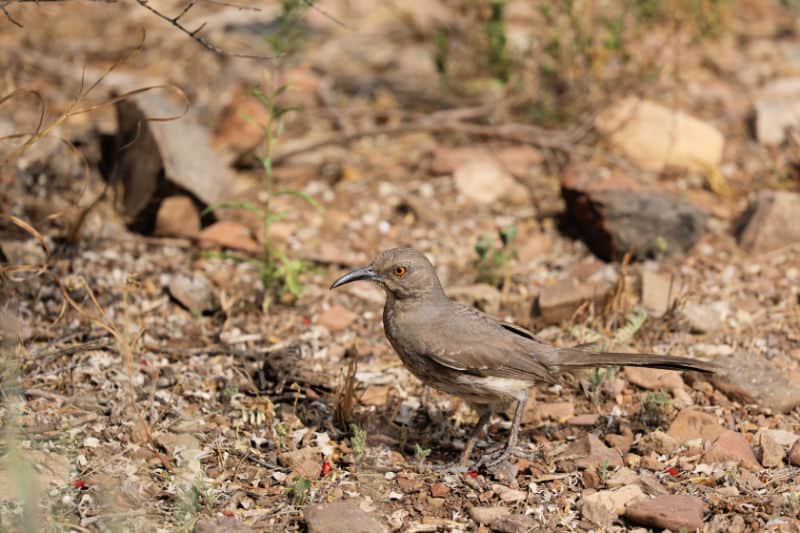
Best time to visit Big Bend National Park.
The best time to visit Big Bend National Park, when you take into consideration weather and temperature, are fall and spring.
The weather is pleasant during the day and chilly at night. Because of the great weather and the surge of spring break visitors, March is one of the busiest months in the park.
National Park Weather and Seasons
Big Bend National Park has dry, low-humidity weather conditions. Heavy thunderstorms and flash flooding are common throughout the rainy season, which runs from June to October.
In the arid environment, things dry up rapidly. The weather in the fall and spring is generally mild and pleasant.
The summers are scorching, with temperatures varying substantially between the desert bottom and the Chisos Mountains; the warmest months are May and June.
Winters are typically pleasant, however, there may be brief bouts of cold weather, including light snow.
Spring
Spring is hectic, yet it provides the ideal temperature balance of hot and cold. March's average high temperature is 75°F, which means you won't be sweating profusely on your day trip.
However, keep in mind that spring break is normally in March, so many other visitors will be doing the same thing. It's also worth remembering that dehydration can hit in April when you least expect it.
Remember to keep water with you at all times so you can get the most out of your hike.
Summer
The hotter months of June, July, and August are your best choice if you want to spend your time on the river.
High temperatures may not be your cup of tea, but they certainly add to the fun of being in the water.
You should have no troubles as long as you have sufficient drinking water and take steps to prevent overexerting yourself.
Autumn/Fall
Fall is also a fantastic time to visit if you like cooler weather. It is rainier in the fall than in the spring, so bring a good raincoat.
It's a wonderful balance for people who prefer fewer visitors without searing temps because it's normally not too crowded unless it is one of the national holidays.
Visitors to the park in September may suffer from dehydration, just as they did in April, so don't forget to bring your water bottle.
Winter
Winter may be a spectacular time to visit Big Bend National Park.
The weather is significantly colder at this time of year, but that won't be an issue for individuals who have come from really cold climates.
The most serious problem occurs at night when temperatures can drop below freezing.
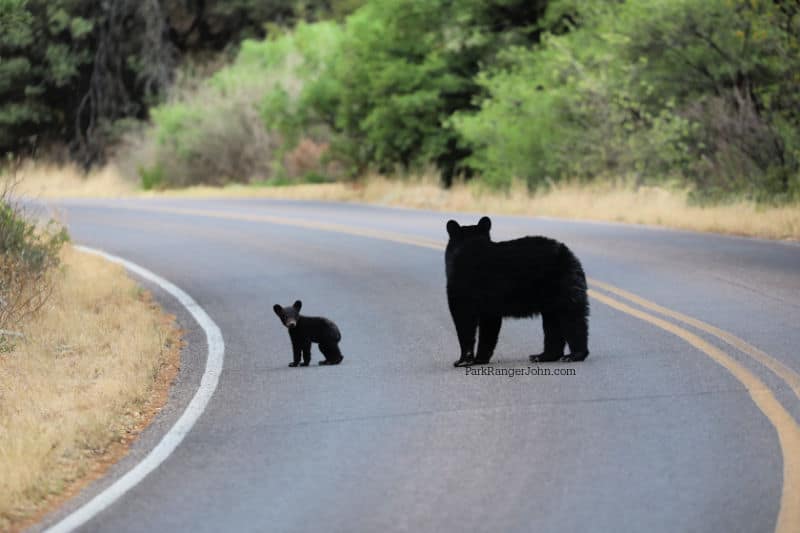
Best Things to do in Big Bend National Park
Big Bend National Park is one of the state's most magnificent natural wonders.
The landscape consists of mountain peaks, the Rio Grande river, and the Chihuahuan Desert are an excellent outdoor playground for hikers, birders, campers, and canoers.
Even if you only want to take a drive through the park, the Ross Maxwell Scenic Drive offers wonderful sights.
Stop by one of the visitor centers for a map of the park and current conditions before heading out to explore utilizing our Big Bend National Park activities list.
Wildlife viewing
Because of their nocturnal adaptation, most native animals are not visible during the day because of the hot environment.
Cougars, roadrunners, coyotes, kangaroo rats, black bears as well as rattlesnakes, bull snakes, southern prairie lizards, and mule deer, may all be seen in the park.
The best viewing locations are the Rio Grande River basin and Cottonwood Campground.
The Rio Grande River, which serves as the park's major supply of water, is one of the greatest places to watch the animals. The river is home to 40 different fish species, as well as turtles, beavers, and a variety of birds.
Cottonwood Campground is one of the greatest places to see local animals traveling to and from their food sources in the morning. Make cautious to secure your food at night to prevent bears from breaking into the campground.
We saw a Black Bear and cub on the road leading to Chisos Mountain Lodge. It was one of our favorite moments in the park.
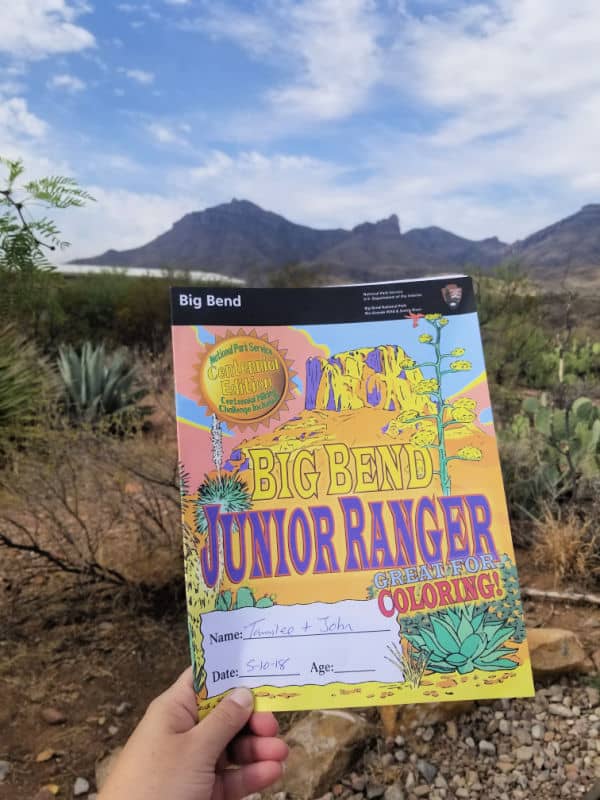
Junior Ranger Program
The Junior Ranger Program at Big Bend is fantastic. The book covers many different areas within the park.
The number of activities that need to be completed depends on the age of the participant. You can also earn bonus badges for three different walks/hikes within the park.
Bird Watching
The park offers a range of good birding opportunities. Some examples of these are wet woodland, grasslands, river corridors, desert springs, pinyon-oak-juniper forests.
When it comes to spotting certain birds or a variety of species, timing is crucial. Only 56 species dwell in Big Bend year-round, out of the 450 species of birds recorded in the park.
The importance of spring and fall migrants, as well as summer and winter tourists, is highlighted. If you're looking for a certain bird species, it's important to look in the right habitats at the right time of year.
Some of the birds you are most likely to see here are Band-tailed Pigeon, Colima Warbler, Lucifer Hummingbird, Varied Bunting, Mexican Jay, Black-chinned Sparrow, Flammulated Owl, Elf Owl, and more.
There is a fantastic Birds of Texas Big Bend Country guide with color photos. The waterproof guide covers common and notable bird species in the park and surrounding area.
Sam Nail - We saw Tanagers and Chat during our visit
Chisos Campground/Lodge - We saw Mexican Jays, Scarlet Tanager, Acorn Woodpecker, and the Mexican Black Bear
Rio Grande Campground - Road Runner, Golden Fronted Woodpecker, Common Black Hawk Nest
Cottonwood Campground - Vermillion Flycatcher, Blue Grosbeak, roadrunners, Audubon warblers, white cap quail
Panther Path at the Visitor Center - Quail, Jackrabbit
Float the Canyons of the Rio Grande
You can take a guided boat tour of the Rio Grande. This river trip tour floats through the canyons in either canoes, kayaks, or rafts.
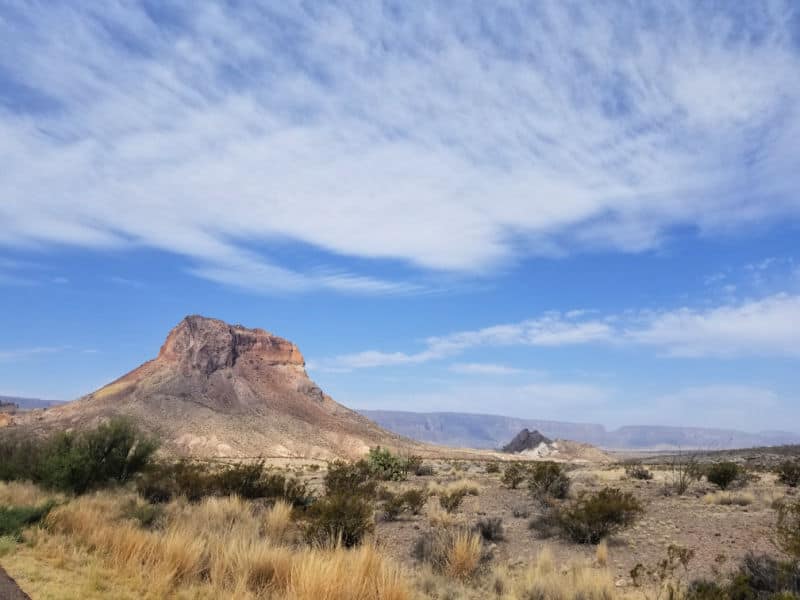
Hiking in Big Bend National Park
Always carry the 10 essentials for outdoor survival when exploring even on day hikes.
Big Bend National Park is a paradise for hikers. There are about 78 hiking, biking, and running trails in the park. Some pass through the desert, while others aim for mountain peaks.
Lost Mine Trail
This 4.80-mile takes an average of 2 hours and 42 minutes to finish on a fairly difficult course. Because this is a popular hiking path, you'll almost certainly run into other people while exploring. The path is available all year and is a lovely place to explore at any time.
The Window Trail
A 5.20 mile-long trail takes an average of 2 hours and 44 minutes to finish. The trail is available all year, although the months of March through October are the finest for hiking.
Santa Elena Canyon Trail
This 1.40-mile out-and-back route takes an average of 39 minutes to accomplish this course, which is rated simple. The route is available all year, but September through May are the greatest months to visit.
Emory Peak Trail
It is a 10.40 mile-long path that takes an average of 5 hours and 54 minutes to finish. The path is available all year and is a lovely place to explore at any time, but it is rated difficult.
Boquillas Canyon Trail
This 1.20-mile route takes an average of 38 minutes. Because this is a popular spot for hiking and paddle sports, you'll almost certainly run into other people while exploring. The path is available all year and is a lovely place to explore at any time.
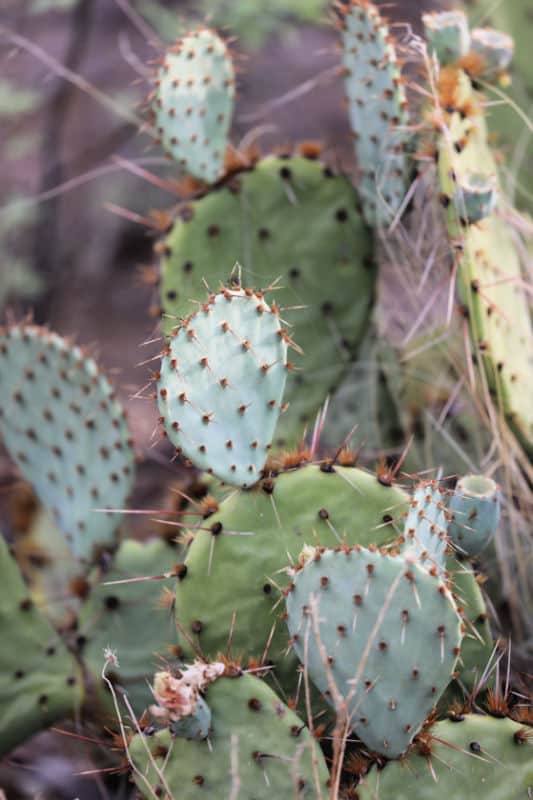
How to beat the crowds in Big Bend NP?
If you want to beat the crowds you should avoid coming to the park over the holidays. Campgrounds are generally packed around Thanksgiving, Christmas, New Year, and spring break.
If this is the only time you can come here, you can still find quiet areas, because the park is so big. Only make sure to arrive at the campground as early as possible.
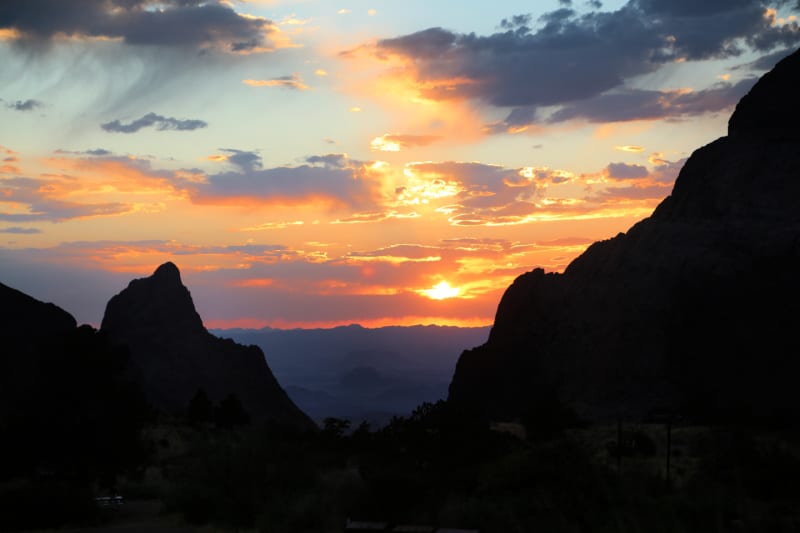
Where to stay when visiting Big Bend National Park
There is one lodge located within Big Bend National Park the Chisos Mountain Lodge. Check out our post with photos and our experience staying at the Chisos Mountain Lodge!
Because Big Bend is such a huge park, going around takes a long time. Three major campsites, the Chisos Mountain Lodge, and backcountry camping are the only places to stay in the park.
The additional accommodation can be found in Marathon, a charming small town, or Lajitas, a vacation town. Marathon, on the east border of the park, is roughly 40 miles north. Lajitas is roughly 20 kilometers from the park's west gate.
Other nearby towns include the two side-by-side villages of Study Butte and Terlingua, as well as Terlingua Ghost Town.
Paisano Village RV Park & Inn - Paisano Village RV Park & Inn provides everything you need. Guests can connect to free in-room Wi-Fi.
Lajitas Golf Resort and Spa - 4-star family-friendly resort by the river. Consider a stay at Lajitas Golf Resort and Spa and take advantage of 18 holes of golf, a grocery/convenience store, and a terrace.
Travelodge by Wyndham Alpine - You can look forward to laundry facilities, a 24-hour gym, and a restaurant at Travelodge by Wyndham Alpine. Stay connected with free in-room Wi-Fi.
Click on the map below to see additional hotels and vacation rentals near Big Bend NP
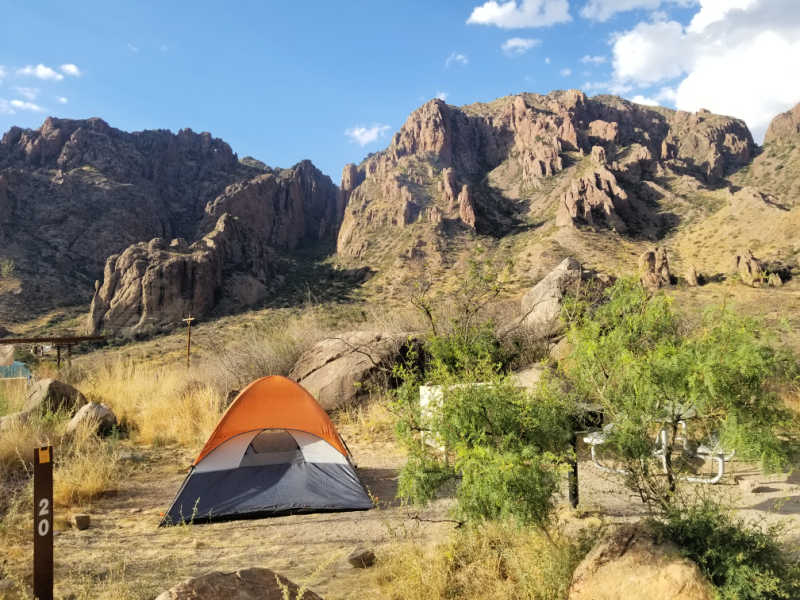
Big Bend Camping
There are three developed campgrounds within Big Bend National Park. You can also experience backcountry camping.
The developed campgrounds are Chisos Basin Campground, Cottonwood Campground, Rio Grande Village Campground.
There is also RV camping at Rio Grande Village RV Campground.
Chisos Basin Campground
This campground is located in a picturesque alpine basin, surrounded by open woods, and with stunning views of the surrounding area.
There are several of the park's most popular trails nearby, and watching a sunset from here is spectacular.
The campground is open year-round. You have to reserve your spot at the park before arriving.
Chisos Basin Campground has 63 sites
Cottonwood Campground
Cottonwood Campground is a very peaceful and relaxing campground with 31 campsites. Reservations must be made in advance.
The campground is conveniently located near the Castolon Historic District, the gorgeous Santa Elena Canyon, and the tail end of the Ross Maxwell Scenic Drive.
Rio Grande Village Campground
The Rio Grande Village Campground is nestled in a wooded area along the Rio Grande river.
Each campground is connected by paved roads, with grassy spaces between them.
Here you will find flush toilets, picnic tables, a grill, and a shelter where you can gather with your family or friends.
Nearby is a dump station. A camp shop with showers and a park visitor center is close by.
Rio Grande Village Campground has 100 sites.
Rio Grande Village RV Campground
This open, paved property is a few minutes walk from the river and major hiking trails. The Rio Grande Village camp shop is nearby.
Full hookups (water, electricity, and 3-inch sewage connection) are available at this 25-site RV park. Tents are strictly prohibited.
Rio Grande Village RV park has 25 hookup sites.
Backcountry camping
Big Bend provides 116 basic campsites along wilderness routes for those who want to get away from crowded tourist areas.
These locations are in the park's most distant desert zones. To get to some of them, you'll have to drive for hours. To access most of them safely, you'll need a robust high-clearance vehicle with a 4-wheel drive.
Beautiful vistas, privacy, and a tiny flat gravel place to pitch up camp next to your car are all available at primitive roadside campgrounds.
There is no shade, bathrooms, or other amenities available. Generators are not permitted in the wilderness. To camp at these sites, you will need a backcountry use permit.

For a fun adventure check out Escape Campervans. These campervans have built in beds, kitchen area with refrigerators, and more. You can have them fully set up with kitchen supplies, bedding, and other fun extras. They are painted with epic designs you can't miss!
Escape Campervans has offices in Vancouver, Seattle, Portland, San Francisco, Las Vegas, Los Angeles, Phoenix, Salt Lake City, Denver, New York, and Orlando
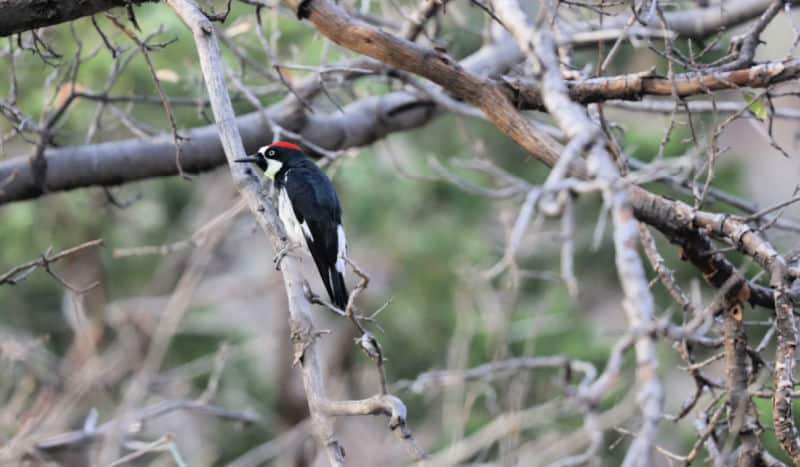
Travel Tips
-Be prepared for the heat! It was 106 degrees on the Rio Grande when we were there in early May.
-Bring lots of water with you and snacks
-Dress in layers, it is cool in the mornings and quickly heats up
-You can experience a 40 to 50-degree temperature swing from morning to the heat of the day! Be prepared!
-Bring your passport with you if you plan to visit Mexico
-Bring your ten essentials and a car safety kit
-Cell phone service is hit and miss throughout the park.
-We did find free public Wi-Fi is available at the Panther Junction Visitor Center, The Chisos Mountains Lodge, and the Rio Grande Village Store.
-Check weather and road conditions daily for updates
-Know your limitations!!!! We met a biker who had to be brought in due to heat exhaustion.
-Big Bend is WAY TO BIG to be seen in one day. If you only have a day or two to visit the park make sure you plan which parts of the park you want to see.
-Big Bend's busy season is generally November through April.
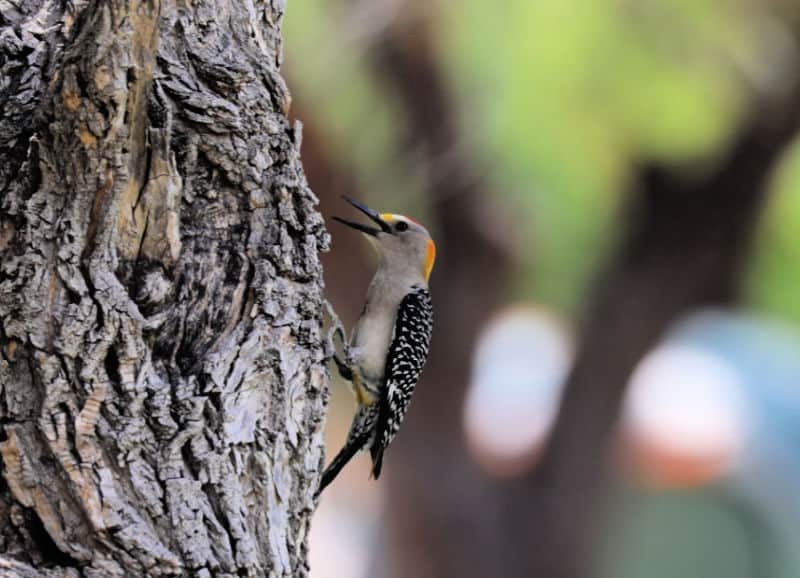
Big Bend National Park Facts
Big Bend National Park was established in 1944
In 1964 Astronauts went to Big Bend NP to study volcanic geology so they could identify the structures and processes they might see on the moon.
The lowest elevation found in Big Bend is 1,850 feet at the Rio Grande Village.
The highest elevation found in Big Bend is 7,832 feet on Emory Peak.
There are more than 450 species of found in Big Bend NP than in any other national park in the U.S.
There are more than 1,295 different plant species found within Big Bend National Park. There are over 60 species of cactus found within the park.
There are 75 species of mammals found within the park. 3,600 species of insects, 56 species of reptiles, and 11 species of amphibians.
There are 8 National Register of Historic Places site or districts within the park including Burro Mesa Archeological District, the Mariscal Mining District, the Homer Wilson Blue Creek Ranch Site, Rancho Estelle, Daniel's Farmhouse, and Luna's Jacal.
There is 118 miles of shared US/Mexico Border including the Mexican States of Chihuahua and Coahuila.
The park has 304 miles of paved and gravel roads.
Additional Resources
Who Pooped in the Park - Big Bend NP
Beneath the Window: Early Ranch Life in Big Bend County
Parks near National Park
Fort Davis National Historic Site
Amistad National Recreation Area
San Antonio Missions National Historical Park
Lyndon B Johnson National Historical Park
Check out all of the National Parks in Texas along with neighboring National Parks in Arkansas, National Parks in Louisiana, New Mexico National Parks, and Oklahoma National Parks
Make sure to follow Park Ranger John on Facebook, Instagram, Pinterest, and TikTok
Nearby Texas State Parks include Big Bend Ranch State Park, Fort Leaton State Historic Site, Monahans Sandhills State park, Seminole Canyon State Park and Historic Site, and Devils River State Natural Area.
